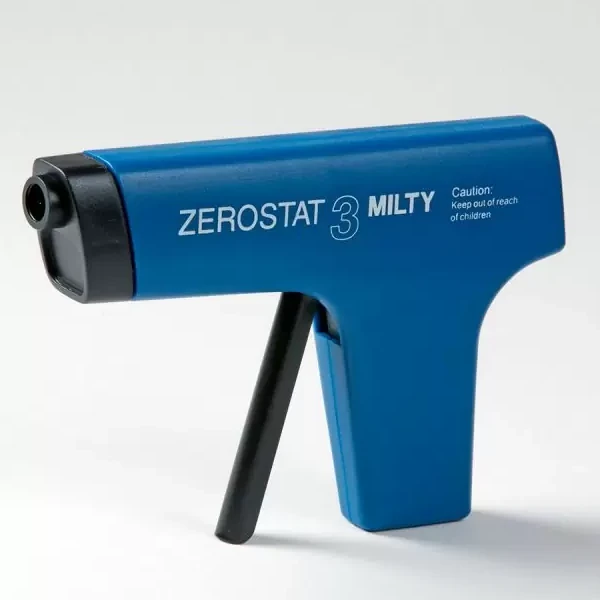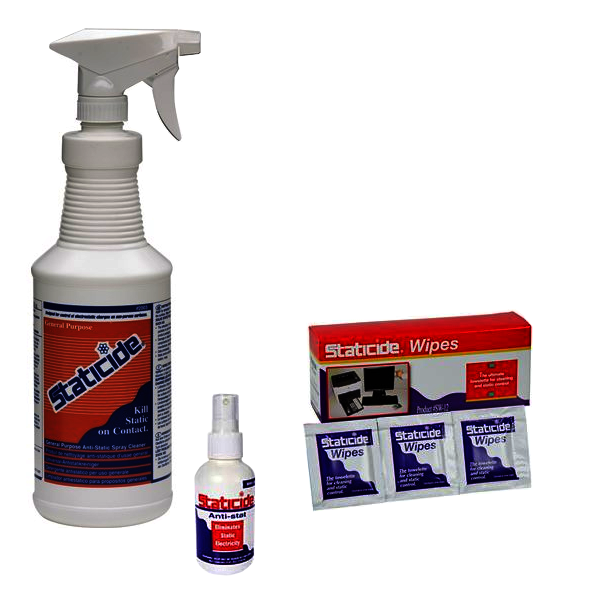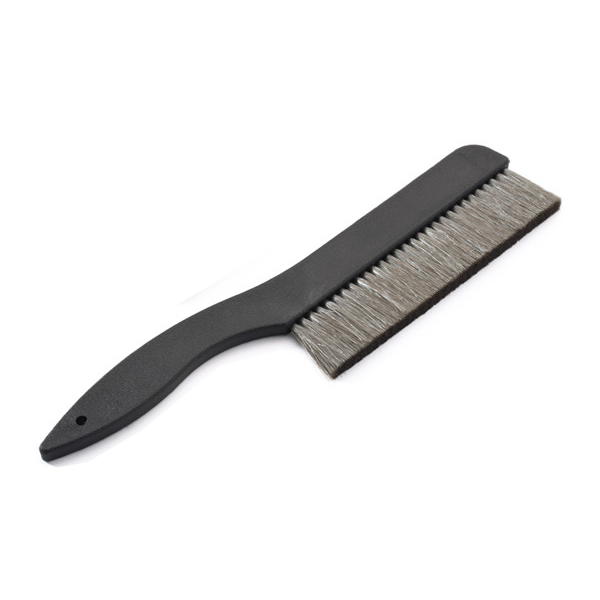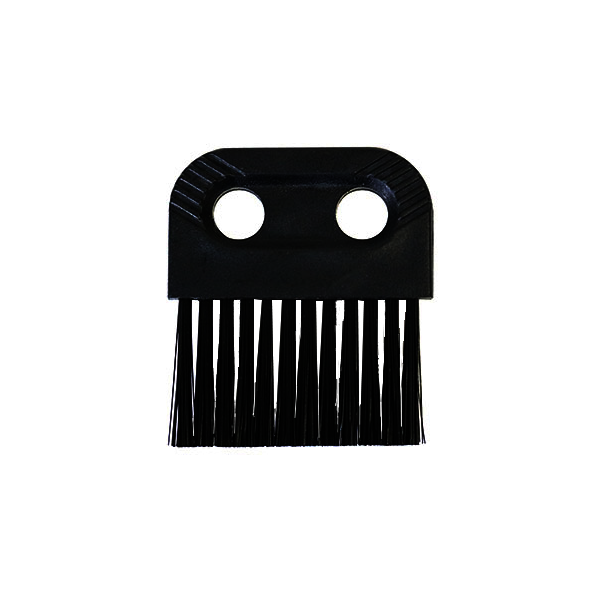Products
Anti-Static Products
- Apertures
- Apertures 1,85 x 0,1mm
- Apertures 2,0 x 0,1mm
- Apertures 2,0 x 0,25mm
- Apertures 2,0 x 0,6mm
- Apertures 3,0 x 0,1mm
- Apertures 3,0 x 0,25mm
- Apertures 3,04 x 0,25mm
- Apertures 4,0 x 0,2mm
- Apertures 4,0 x 0,6mm
- Apertures 6.35 x 0.02mm
- Apertures 6,35 x 0,125mm
- Apertures 10,0 x 0,1mm
- Apertures 10,0 x 0,6mm
- Apertures 12,0 x 0,1mm
- Apertures 19,99 x 0,25mm
- Gilded strip apertures
- Multihole Strip Apertures
- Spray Apertures
- Thin Foil Apertures
- Tantalum Wehnelt
- Top Hat Apertures
- Aperture Cleaning
- Brushes
- Calibration
- GSR & Particle Analysis
- Light Microscopy
- SEM Calibration
- (CD) Calibration Test
- Back Scattered Electron Test
- Boron substrates
- Chessy test specimen
- Critical Dimension Magnification Standards
- Demonstration Specimens
- Glass size standards
- Gold on Carbon
- Gold Spheres on Carbon
- Line/Grid Standards
- Low & Medium Magnification
- MRS-3
- MRS-4
- MRS-6
- Multi Calibration Standard
- Polystyrene Spheres
- Silicon test specimen
- Tin on Carbon
- TEM Calibration
- Chemicals
- Cleaning
- Cryo Products
- Desiccators Cabinets
- Diamond Knives
- Dissection
- Embedding
- FIB Supplies
- Filaments
- Forensics
- General Lab Supplies
- Applicator, Sticks and Swabs
- Beakers, Cylinders and Containers
- Cell Strainer System
- Dishes and Boats
- Glass Bottom Dishes
- Laboratory Glassware
- Laboratory Tongs
- Microscopy Illuminators
- Microwave Specimen Holders
- Parafilm M®, Melinex Film
- PELCO Rotators
- Petri Dishes
- Pocket Scales
- Spatulas & Spoons
- Storage Jars, Containers & Bottles
- Thermometers
- Timers
- Ultraviolet Lamps
- Vials, Tubes and Cups
- Wire Mesh
- Gloves
- Grids
- Histology
- Immersion Oils
- Laboratory Tape
- Microscope Slides
- Pipettes and Pipettors
- PTFE Laboratory Products
- Razor- Microtome Blades
- Safety Products
- Slide Boxes, Trays & Mailers
- Slide Labels
- Spatulas and Spoons
- Staining
- Weighing Dishes
- Carbon tabs, tapes & sheets
- Mount Storage Boxes
- Planchets
- Replication Materials
- Scintillators
- Specimen Mount Grippers
- Specimen Preparation Stations
- Starter Kits
- Stubs, Mounts and Holders
- M4 Threaded, Cylinder, and Other Stubs
- Bulk Specimen Holders, M4
- Carbon Planchet Holders, M4
- Carbon, Brass, and Copper Mounts
- Cross Section Holders
- Cylinder Specimen Mounts
- E-Beam Lithography Mount, M4
- EBSD Pre-tilt Holders & Mounts, M4
- Filter Holders, M4
- Flat Sample Clip Holders
- Hitachi T-base Specimen Holders
- Metallographic Mount Holders
- Modular Stage Adapters, M4
- Mount Adapters, M4
- Multipurpose Specimen Holder
- Pin Stub Holders, M4
- Q Pin Mounts and Holders
- Rectangular Mounts
- SEMClamp Holders, M4
- SEMClip Cylinder Mounts
- SEMClip Geological
- STEM Imaging Holder, M4
- TEM Grid Holder, M4
- Tilt Specimen Holders
- Vise Type Holders
- Wafer & Large Sample Holders
- Pin Stubs Specimen Mounts and Holders
- Adapter Buttons
- Angled Pin Stub Holders
- Bulk Specimen Holders with Pin
- Carbon, Brass, and Copper, SEM Mounts
- E-Beam Lithography Mount
- EBSD Pre-tilt Holders & Mounts
- FIB Grid Holders
- Filter Holders, Pin
- Jeol Specimen Holders
- Low Profile FIB Mounts
- Low Profile SEMClip
- Metallographic Mount Holders
- Modular Stage Adapters
- Mount Adapters
- Multi Purpose / Bulk Holders
- Multi-Pin Stub Holders
- Pin Stub Specimen mounts
- Planchet Holders
- Q Pin Stubs and Holders
- Sample Holder Sets
- SEMClamp Holders
- SEMClip Pin Mounts
- Slotted Pin Stubs
- STEM Imaging Holder
- TEM Grid Holders
- Thin Section Holders
- Variable Tilt Holders
- Vise Clamp Holders
- Wafer Holders with Pin
- M4 Threaded, Cylinder, and Other Stubs
- Cabinets for Tissue Cassettes
- Cardboard, Tin Boxes & Cans
- Gel-Pak® Substrate Carriers
- Grid Storage Boxes
- Compact Modular Cabinet
- Plastic Jars, Containers & Bottles
- Membrane Boxes
- Plastic Storage Boxes
- Slide Boxes, Trays and Mailers
- Mount Storage Boxes
- Wafer Carrier Trays
- PELCO X-TREME Cases
- Zipper, Barrier Bags
- Accessories
- Aesculap® – Forceps
- Aquarius Tweezers
- Cantilever Tweezers
- Carbon Fibre tweezers
- Dumont™ Tweezers
- General Purpose Forceps
- Industrial, Economy Tweezers
- Mount Grippers
- PELCO Tweezers
- Plastic Tipped ESD Tweezers
- Plastic Tweezers, Flat & Sharp
- Plastic, Wafer Tip Styles
- Surgical Tissue Forceps
- Wafer Tweezers
- Wafer, Component, Cover Glass
- Wire Cutting Tweezers
- Zirconia Ceramic Tweezers
Description
ZEROSTAT3 Anti-Static Gun
This compact, contained device comprises piezoelectric crystals and a compression trigger mechanism to create a steady stream of ions from the tip.
The Zerostat3 Anti-Static Gun creates both positive and negative ions in a complete cycle.
When the trigger is squeezed, positive ions are released. When the trigger is released, negative ions are created.
This functions allows to either induce a positive of a negative charge.
To reduce a negatively charged surface or object, point the Zerostat to the surface and squeeze the trigger, then point the Zerostat away when releasing the trigger.
To induce a negative charge on a surface, point the Zerostat to the surface when releasing the trigger.
The static reduction effect can last for hours.
The Zerostat3 Anti-Static Gun has numerous applications such as keeping phonograph records, film or CDs, DVDs, lenses, glass, displays static-free, dust-free and lint-free.
It also works very well for removing static charge when handling TEM grids, preparing SEM samples or removing dust from samples.
Other applications are chemical labs handling powder samples to reduce static charge on (weighing) containers.
The Zerostat does not contain batteries or any replacement consumable parts.
The Zerostat does not use a forced gas stream.
The lifetime of the anti-static gun is approximately 10,000 cycles and needs to be replaced when the it doesn’t generate antistatic charges.
Small handheld unit with a weight of 135g (0.30lbs).
| Art. | Description | Unit | Price | Quantity | |
|---|---|---|---|---|---|
| 54610 | Zerostat3 Anti-static gun | Each | € 160,00 |
Description
Staticide Antistatic Solution and Wipes
Staticide is an easy to use topical antistatic solution which can be sprayed on virtually any surface to reduce static charging.
It is easily applied on work surfaces, lab benches, chairs, walls, floors, tools, clothing and other materials.
The product is non-staining, but we do advise to test first before applying to sensitive surfaces.
The antistatic effect last from weeks to months.
It prevents static before it builds up and keeps work areas dust-free.
Available in 4 or 32 oz (1qrt.) spray bottles and as wipes.
The wipes are particularly useful for keyboards, monitors, instruments and equipment where a spray might interfere with sensitive parts such as lenses or electronics.
Although it can eliminate charging on non-conductive samples, we do not recommend this product for use on non-conductive samples for imaging in the SEM.
| Art. | Description | Unit | Price | Quantity | |
|---|---|---|---|---|---|
| 54690-4 | Staticide Spray Bottle, 4oz (118.5ml) | Each | € 12,60 | ||
| 54690-32 | Staticide Spray Bottle, 32oz (946ml) | Each | € 23,00 | ||
| 54692 | Staticide small wipes, 24/box | Each | € 12,60 |
Description
Anti-Static Brushes
Static electrical charge is generated between materials through friction, pressure or separation of two materials. This is sometimes called the Triboelectric Effect. A material that inhibits the generation of static charges (generally less than 200 volts) from triboelectric generation is classified as anti-static. Anti-static materials used to make brushes include Wood, Hog Bristle, Horse Hair and Goat Hair. These materials can be used in ESD sensitive areas as long as the brush remains in a liquid environment. In a dry environment only conductive or dissipative materials should be used in ESD safe areas.
The most critical aspects of the ESD brush are the fiber, core or handle material, and grounding. Surface resistivity of the brush material largely determines the electrostatic properties of the brush. Range of surface resistivity (ohms) is:
1012 to 1016 Insulative materials
105 to 1011 Dissipative materials
102 to 104 Conductive materials
Anti-Static brushes are made from low charging and natural materials that are near neutral on the triboelectric chart. They neither give nor take electrons and, therefore, remain essentially electrically neutral. There can, however, be a slight charge created. In extreme voltage sensitive applications, these brushes should be used only in a liquid environment.
Mounting
If the mounting location is not grounded, a grounding strap or wire incorporating a 1 megohm resistor should be used between the brush and an electrical ground. Potentially severe bodily harm may result from the use of a conductive brush if a 1 megohm resistor is not used.
Note: Conductive fibers are NOT recommended for use with unencapsulated electronic microcircuits. Minute pieces of conductive material have been known to cause short circuits.
Dissipative Brushes
These dissipative brushes have a surface resistivity of 105 to 1011 ohms, a higher resistivity than the conductive brushes but sufficiently conductive to preclude any static buildup in the brush. These are excellent tools to use in removing any static charge that will result in the adhesion of particles such as dust to an object. Please use these brushes with a wrist strap or other mechanism to provide a path to ground for safety.
Thunderon is a very fine (0.04mm, 0.0015″diameter) acrylic fiber chemically bonded with copper sulfide. This special fiber will dissipate a charge on an electrically charged surface. The surface resistivity of Thunderon is 102 ohms. The plastic handle is dissipative with a surface resistivity of 105 Ohms.
| Art. | Description | Unit | Price | Quantity | |
|---|---|---|---|---|---|
| 51920 | Dissipative Thunderon Brush, 24.8cm (9-3/4″) Handle Length | Each | € 91,30 | ||
| 51921 | Dissipative Thunderon Brush, 10.2cm (4″) Handle Length | Each | € 88,70 |
Description
Anti-Static Brushes
Static electrical charge is generated between materials through friction, pressure or separation of two materials. This is sometimes called the Triboelectric Effect. A material that inhibits the generation of static charges (generally less than 200 volts) from triboelectric generation is classified as anti-static. Anti-static materials used to make brushes include Wood, Hog Bristle, Horse Hair and Goat Hair. These materials can be used in ESD sensitive areas as long as the brush remains in a liquid environment. In a dry environment only conductive or dissipative materials should be used in ESD safe areas.
The most critical aspects of the ESD brush are the fiber, core or handle material, and grounding. Surface resistivity of the brush material largely determines the electrostatic properties of the brush.
Range of surface resistivity (ohms) is:
1012 to 1016 Insulative materials
105 to 1011 Dissipative materials
102 to 104 Conductive materials
Anti-Static brushes are made from low charging and natural materials that are near neutral on the triboelectric chart. They neither give nor take electrons and, therefore, remain essentially electrically neutral. There can, however, be a slight charge created. In extreme voltage sensitive applications, these brushes should be used only in a liquid environment.
Mounting
If the mounting location is not grounded, a grounding strap or wire incorporating a 1 megohm resistor should be used between the brush and an electrical ground. Potentially severe bodily harm may result from the use of a conductive brush if a 1 megohm resistor is not used.
Note: Conductive fibers are NOT recommended for use with unencapsulated electronic microcircuits. Minute pieces of conductive material have been known to cause short circuits.
Dissipative Brushes
These dissipative brushes have a surface resistivity of 105 to 1011 ohms, a higher resistivity than the conductive brushes but sufficiently conductive to preclude any static buildup in the brush. These are excellent tools to use in removing any static charge that will result in the adhesion of particles such as dust to an object. Please use these brushes with a wrist strap or other mechanism to provide a path to ground for safety.
Thunderon is a very fine (0.04mm, 0.0015″diameter) acrylic fiber chemically bonded with copper sulfide. This special fiber will dissipate a charge on an electrically charged surface. The surface resistivity of Thunderon is 102 ohms. The plastic handle is dissipative with a surface resistivity of 105 Ohms.
| Art. | Description | Unit | Price | Quantity | |
|---|---|---|---|---|---|
| 51922 | Anti-Static Static-Away Brush, 5.7cm (2.25″) Handle Length | Each | € 51,70 |




